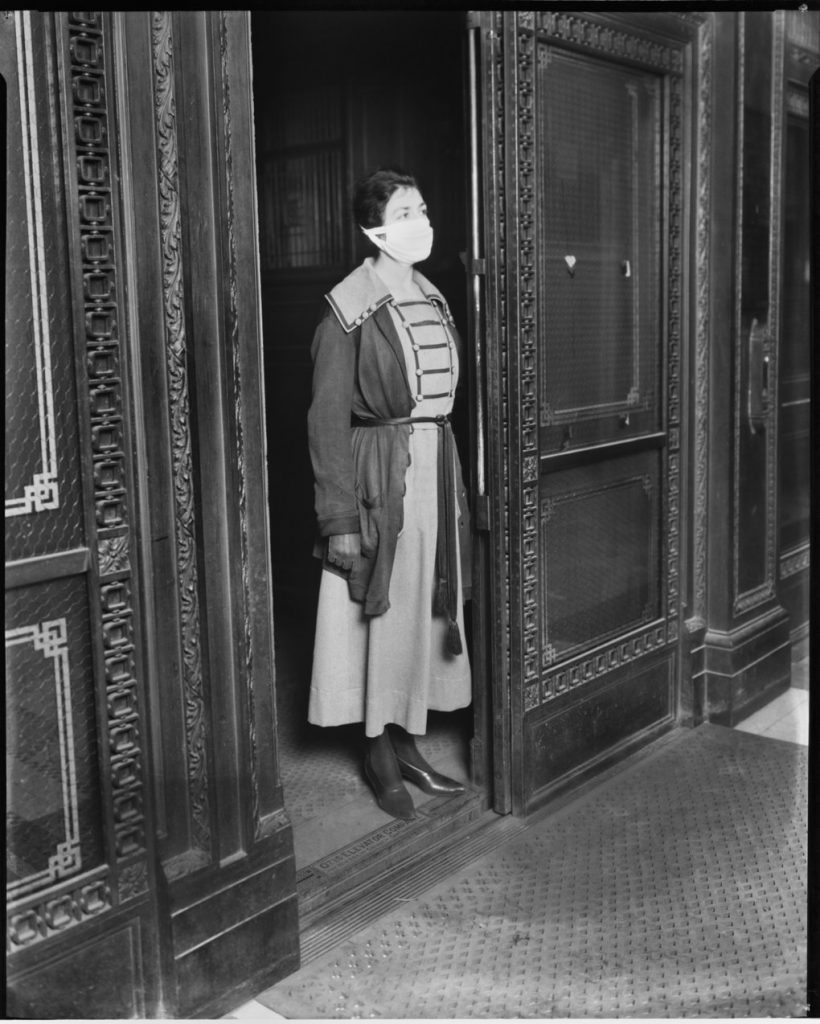
500 young men raise their hands and look up into the sky. Their focus is a flagpole standing in the center of the young men. Atop the pole is the 48-star American flag. An Army officer and a Union College official read aloud, in full speaking voice, the words from of a sheet of paper. At this ceremony in Schenectady, New York, the incoming class of Students’ Army Training Corps now exists.
The flags hang lower in northeastern France. Rain pounds the ground into mud. Over a million American soldiers slowly sink in, sucked down in the water-filled trenches, ditches, and holes where they live and fight and withstand a fight. Today, the sodden earth declares the Meuse-Argonne offensive stalled. Today as well, the H1N1 virus, is up and moving, alive and well in the miserable rain. And so the fevers and tremblings begin.
West across the Atlantic, a dark pit opens up across the United States.
Some stand at the rim. The state government of Minnesota braces for the worst with a request to the Red Cross for 15,000 facemasks. The residents of Missoula, Montana are waiting for the illness to strike them; no cases reported as of yet. Thirteen military posts and facilities around the nation are, like Missoula, holding their collective breath for the first cough. For them, the question is when.
Some see a dim light in the pit. Los Angeles, California has just its first case of influenza today. People there are expecting more but have proper plans in place to help respond to the emergency. The town government of Princeton, New Jersey also has only a few cases but is clamping down ahead of time with a shutdown of all sites of public gathering. And in Newark, New Jersey the editor at Journal Every Evening—a hopeful name for a newspaper if ever one existed—asserts that the epidemic is weakening with real control likely reasserted in a few more days.
In Boston, down in the dark with many other places where influenza has spread and settled, the single-day death toll is the highest so far—202 die in twenty-four hours. One day, one city, one pit.
A thought for you on Day 24, April 5, 2020, twenty-four days after President Trump declares Covid-19 a national emergency—the difference between expectations. I’m thinking about today’s statement in the Newark newspaper and today’s plans in communities of Los Angeles, Princeton, and Missoula. The pit is real for each but the expectation is different when they stand at the edge and stare down into the blackness. It’s important not to see the worst while at the same time understanding that the better or the best may not be immediately within reach. You’ll see something in the void, coming from something in your mind and experience. But what will it be? My suggestion is to keep your analysis, assessment, reflection, and thinking in the middle and, yes, the middle can change and move. Let the middle move as you grow to understand it; don’t let yourself swing wildly back and forth from side to side, extreme to extreme. Find the middle. The middle will offer you its own balance more stable and enduring than the balance tenuously struck through the combination of opposing, quivering ends. In other times and moments, a leader is often insisted on pushing to the ends because, we’re told, that’s where the vision is, the passion is, the path ahead is. Yes, it can still be true. But also now, in learning from Day 24, we might look at the value of the middle. If the pit opens, the middle will be vital.

(note to reader—I invite you to subscribe to this series/blog. The purpose of my posting in this series is the purpose of my enterprise at Historical Solutions—to explore the past in a new way that brings new and different value to you, both in the present (this minute) and on the edge of the future (what’s ahead or forward of this minute). The past is everything before now, the totality of all time before the present; history is a set of very small slices of the past that, for a particular reason, have been remembered. If you wish to contact me privately, please do not hesitate to text or call 317-407-3687)







